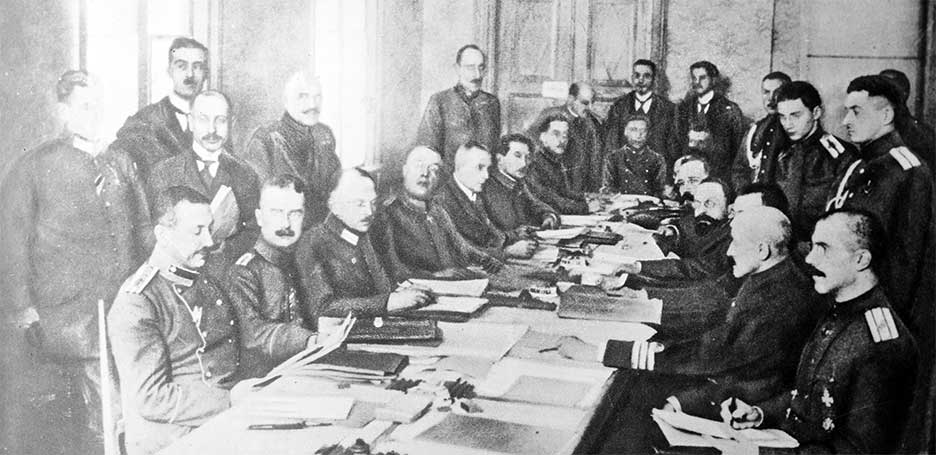1918 Treaty of Brest-Litovsk

Peace Confernce at Brest Litovsk
A treaty was signed between the central powers (Germany, Austria, Hungary, Turkey and Bulgaria) and the Soviet government. Under the terms of the agreement, Russia lost Estonia, Latvia, Ukraine, most of Byelorussia, and Russian Poland. The treaty was annulled under the terms of the German armistice.
When the Bolsheviks seized power, they made it clear they wanted to end the war. Even if they had not, they had no choice as the Russian army was disintegrating. On December 1, the Bolshevik Armistice Committee left Petrograd from the front. The next day they crossed German lines and were taken to a former Palace at Brest Litovsk. Meeting the Russians were representatives of Germany, Austria-Hungaria, Bulgaria, and Turkey. Each one of them had demands of the Russians. Negotiations concluded on December 15 when a full ceasefire went into effect on the Eastern Front.
Talks on a final peace agreement continued until March 3, 1918, when an agreement was signed. Under the terms of the deal, Russia agreed to give up claims to the Baltic Provinces, Poland, White Russia, Finland, Bessarabia, Ukraine, and the Caucasus. All of those areas containing 1/3 of the prewar Russian population were to be occupied by the Germans. Russia also lost all but one of its Baltic Ports while also having Odesa, its main Black Sea port occupied by Russia. Russia also had to return the Armenia areas that it had conquered to Turkey. Russia had no choice but to agree to the onerous terms of the agreement. It is doubtful whether Russia could have held off a renewed German assault. For their part, the German were anxious to conclude the agreement in order to rush additional troops to the Western Front before the American Army could fully deploy.
 >
>